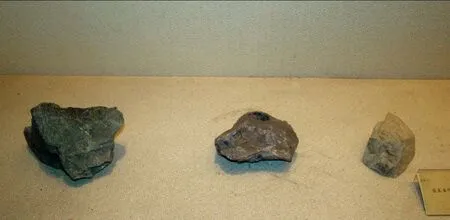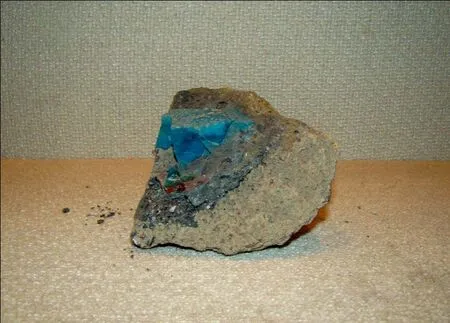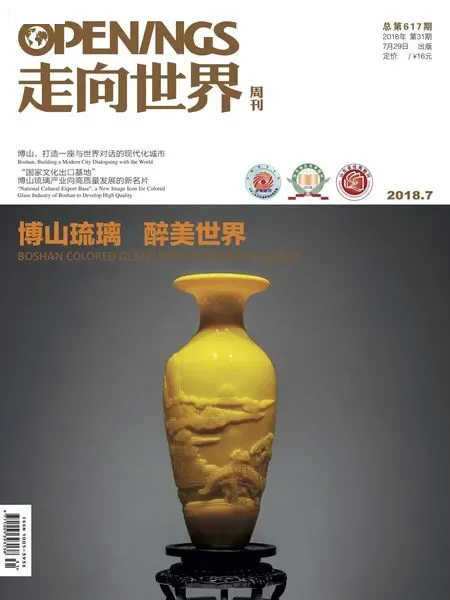古琉璃作坊遺址:跨越時空,記錄歷史
1982年11月,山東博山發生了一件重大的考古事件。這一事件,甚至驚動了故宮博物院琉璃研究資深專家——楊伯達親自前來指導考察。在經過嚴謹細致的論證之后,專家們認定該遺址為國內已發現的最早的古琉璃作坊遺址。
位于博山區大街北首路西的博山第一百貨商店大樓基建工地上,一處古琉璃作坊遺址被發現并得以及時清理。由于該遺址地處市中心,且為搶救式發掘,當時清理的范圍僅限于博山第一百貨大樓403平方米左右的地槽范圍。這次發掘共發現大爐1座、小爐21座。大爐的用途是將礦石熔化成琉璃液,小爐則是每座生產一種產品,其產品主要為簪、珠、環等。
從平面上看,遺址地槽呈南北走向,分割為三條約為42米的縱向長溝,分別為東溝、中溝和西溝;從深度上看,整個遺址文化層的厚度在2.8米左右,自上而下分為三層。由于地槽東溝北端東壁上的文化層較為明顯,因此將其作為典型進行剖析介紹。
第一層為近現代擾亂層。灰褐土,質地疏松,厚度30-50厘米,主要出土青花瓷片和近現代建筑殘渣、磚瓦。
第二層為琉璃作坊遺址文化層。黃褐土,質地致密,雜有紅燒土塊,遺跡有琉璃爐爐底、石砌墻基,而遺物有瓷器、玻璃器、玻璃料、料條、玻璃原料,坩堝等爐具,以及“洪武通寶”銅錢一枚。根據遺跡、遺物的特點和這一枚“洪武通寶”銅錢,專家初步認定該遺址年代應為元末明初。
第三層為金元文化層。淺褐色土,質地較硬,厚60-65厘米。出土遺物有瓷器、瓷窯窯具和“開元通寶”“政和通寶”“至和元寶”“元□□寶”銅錢各一枚。開元,為唐玄宗時的年號;政和,為宋徽宗時的年號;至和,為宋神宗時的年號;以元字開頭的年號,在宋、金、元時有多位皇帝使用過。
從這次琉璃作坊遺址的挖掘與發現中,專家們分析指出,就該遺址的生產規模、產品質量及技術水平而言,博山琉璃生產的歷史比該遺址所反映的年代要更早。這對博山當地陶琉行業的發展具有十分重要的意義,這個遺址不僅為博山是“中國琉璃起源地”的說法提供了充分的證據,更讓“中國琉璃之鄉”的稱號實至名歸。
編輯/郭蓓蓓

○出土古代琉璃原料3件。Three pieces of ancient colored glaze material unearthed.

○出土古代坩堝殘片。Ancient crucible piece unearthed.

○ 古琉璃作坊遺址位置示意圖。Location Map of the Ancient Colored Glaze Workshop Site.
In November 1982, a major archaeological event occurred in Boshan, Shandong. An ancient colored glaze workshop site was discovered and immediately cleaned up at the construction site of Boshan 1st Department Store Building, West Beishou Road, Boshan District Street.In the excavation, 1 big furnace and 21 small furnaces in total were found. The big furnace was used to melt ore into colored glaze liquid; each small furnace was used to produce a certain product.Such products mainly include hairpins,beads and rings.
For the excavation and discovery of the workshop site, experts analyzed it and indicated that considering the production scale, product quality and technological level of this workshop site,the colored glaze production history of Boshan might be earlier than the age reflected by it. It is of great significance for the ceramic and colored glaze industries of Boshan. This site not only provides sufficient evidence for the statement that Boshan is the “place of origin of colored glaze in China”, but also enables the title of “Land of Chinese Colored Glaze” to match the reality.

